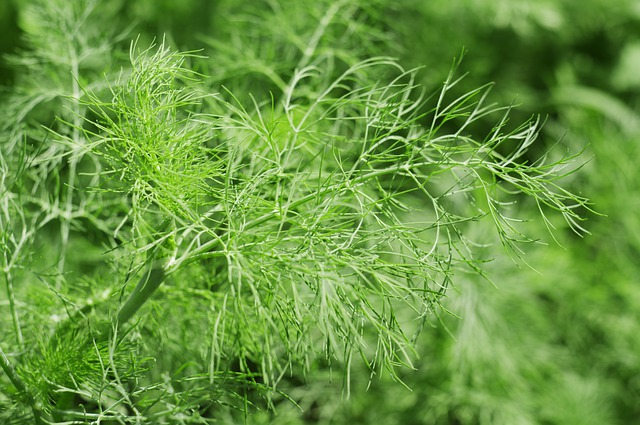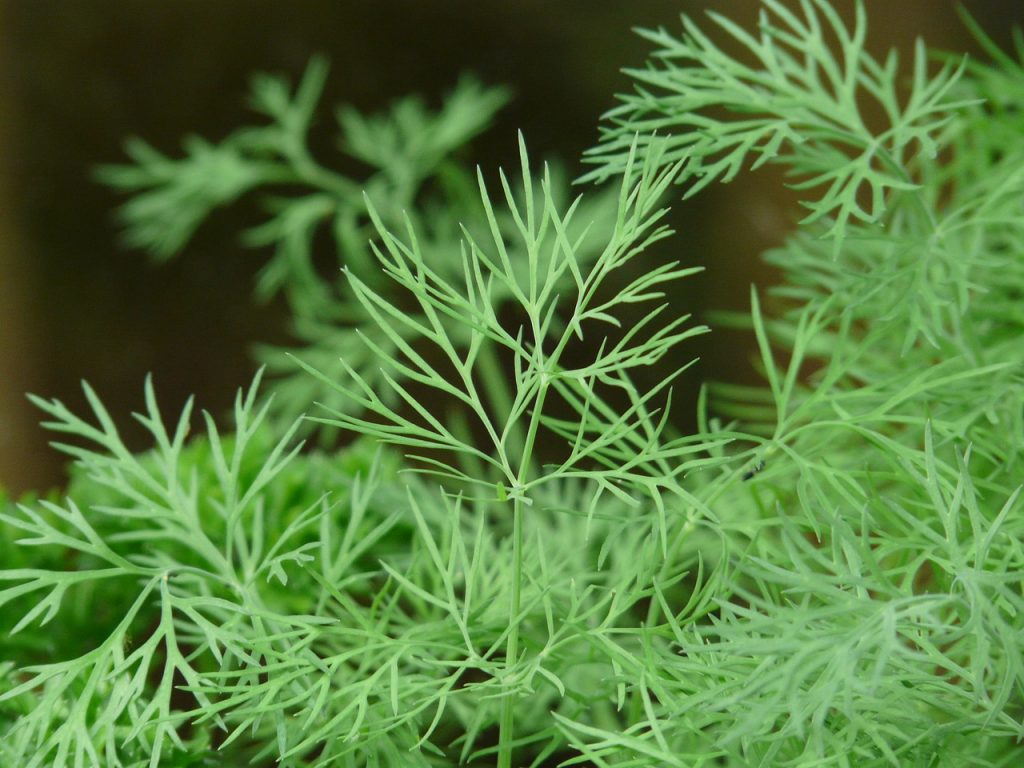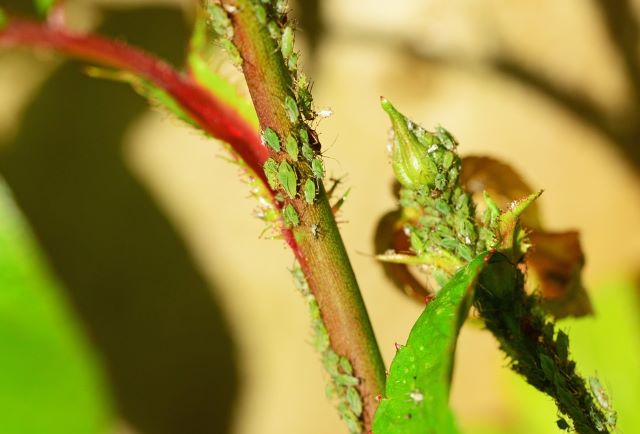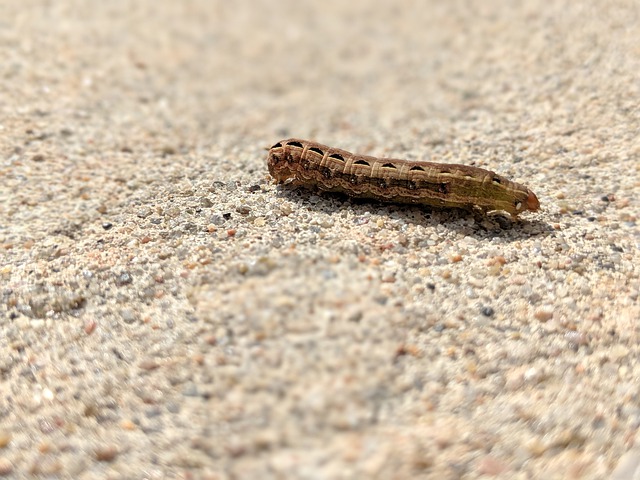Dill is a hardy annual that is generally regarded as being easy to grow. However, if dill is not properly cared for, it can wither and die. If you’re experiencing issues with your dill plant and wondering why it’s dying, there could be several causes.

Table of Contents
Why Is My Dill Dying?
The most likely reasons your dill plant is dying are an incorrect watering schedule, too much fertilizer, too much or too little sunlight, and certain diseases and pests.
If you’re wondering why your dill is dying, read on to discover the causes and solutions to common dill plant problems.
Incorrect Watering Schedule
The most likely reason your dill plant shows signs of stress is incorrect watering practices. The wrong watering schedule can severely impact the growth and health of your dill plants. Too much or too little water can cause your dill plant to turn yellow or brown and die.
In addition to a watering schedule that does not work for your dill plants, there could be a problem with your soil drainage. Often dill plants become over-watered because the soil they are planted in doesn’t drain the water sufficiently. I have experienced this with clay-like soil conditions that I needed to fix before my dill could thrive.
Over-watering and Lack of Drainage
Over-watering and lack of soil drainage can severely affect your dill plants. When a dill plant is overwatered, or the soil is not well-draining, the roots can become waterlogged and start to rot.
Root rot will cause the plant to turn yellow as the plant can not take in much-needed nutrients from the soil. The entire plant will turn brown and die if the problem is not corrected.
How to Fix it: Firstly, stop watering your dill plant as frequently. As a general rule, dill should be watered one to two times per week. When you water your plants, you should soak the soil thoroughly. You can test the soil moisture level by putting your finger about ½ an inch into the soil. If the soil is still damp, do not water your plants.
If you think your stressed dill plant is caused by a lack of drainage in the soil, you will need to correct that. One way to improve drainage is to add organic matter, such as compost or rotted manure, to the soil to improve its structure. I used a combination of both compost and aged manure to fix my soil.
Lack of Water
Just as too much water can cause your dill plant to become stressed and turn yellow, a lack of water stresses your dill plant too. If your dill plant has become stressed due to a lack of water or drought conditions, it will turn brown and wilt.
Drought conditions cause the soil around your dill plant to dry up faster than when you are experiencing normal weather conditions.
How to Fix It: If your dill plant is not getting enough water, adjust your watering schedule to the schedule outlined above.
If your plant displays these symptoms during a drought or extremely hot and dry weather, you should water your dill plant more frequently. You want the soil around your dill to remain moist but not soggy.
Too Much Fertilizer
Have you heard the saying, “Too much of a good thing can be bad?” In the case of your dying dill plant, too much fertilizer can be bad. Like any other plant in your herb garden, dill plants take up soil nutrients.
As soil is not always brimming with the nutrients your plants need, you must help it by adding fertilizer. However, too much fertilizer can cause your dill plant to turn yellow and die.
Although dill needs nutrients to survive, it does not need to be fertilized very often. It would be best to fertilize your dill plants once in the growing season. You should also only plant dill in soil enriched with organic matter. That should provide enough nutrients for your dill plant.
How to Fix It: If you have over-fertilized your plants, you can do a few things to help your dill plant. First, remove any fertilizer that you can see. Second, flush the soil with excessive soaking from the garden hose. I find it is best to flush the soil in the early morning to avoid waterlogged soil.
Too Much or Too Little Sunlight

Another common cause of drying dill plants is sunlight. Too much or too little sunlight can adversely affect your dill plant. Your dill needs to be planted in full sun, receiving a minimum of 6 hours of sunlight daily.
However, if your dill gets more than 8 hours of direct sunlight daily, it will become scorched and die. Similarly, if your dill plant does not get a minimum of 6 hours of sunlight per day, it can become weak, leaf growth will be sparse, and it will die.
How to Fix It: If your dill plant is dying because it is getting too much sun each day, you can cover it with a shade cloth during the hottest part of the day. You will also need to increase the amount of water you give it, as it will dehydrate from excess sun exposure.
If your dill plant is dying because it does not receive enough sun during the day, you can fix the problem by cutting back any overhanging trees and pruning any plants that may be shading them.
Dill is notoriously bad at being transplanted and will likely die if you attempt to move it. For shady gardens, it is best that you plant your dill in a pot so you can move it throughout the day to ensure it gets a minimum of 6 hours in the sun.
Diseases
You dill plants are susceptible to several diseases that can cause them to wilt, yellow, and eventually die. Fungi, bacteria, or viruses can cause these diseases and can be caused and spread by gardening tools, pests, the wind, and dampness.
The most common diseases that could be behind your declining dill plant are:
Powdery Mildew
Powdery mildew is a fungal disease that is spread through the wind. Powdery mildew most commonly targets vegetables that belong to the cucurbit family.
This disease begins with small powdery white spots dotted on the surface of your dill plant. The powdery spots will soon spread to the stalks and flowers of your plant. Your leaves will begin to turn brown and die.
How to Fix It: The diseases can be controlled by spraying your dill with a DIY milk spray or, if it occurs early on, by applying sulfur. I have found that powdery mildew can also be controlled with a mixture of baking soda, washing-up liquid, and water, which you apply once every two weeks.
Carrot Motley Dwarf
Carrot motley dwarf is caused by two viruses, the Carrot redleaf virus and the carrot mottle virus. It is a viral infection spread by the common garden pest, aphids. This disease will turn your dill plants’ leaves red and yellow.
How to Fix It: Prevention is the way to manage this disease, which can be done by preventing an aphid infestation. Another way to stop carrot motley dwarf is to avoid planting your dill close to overwintered carrots.
Cercospora Leaf Blight
Cercospora leaf blight is a fungal infection that is a particularly destructive disease affecting your dill plants. This disease causes small necrotic marks on the leaves of your dill plant that grow into large brown and black necrotic spots with the telltale halo. The leaves of your dill plant will curl and die. The disease is caused by infected seeds and spread via water.
How to Fix It: The way to fix this disease is through prevention. You should make sure you plant disease-free seeds. You can control the disease if caught early through the use of fungicides.
Pests
Several pests like to feed on your dill plants; many won’t necessarily kill your plant, but a few will.
Aphids

One such pest that can kill your plant is aphids. These tiny light green, white, or black insects are a menace, especially when they have chosen your dill plants to feed from. Aphids spread the harmful carrot-mottled dwarf virus and can cause mold to grow on your plant.
How to Fix It: You can remove aphids from your plants by spraying them with the garden hose and then applying a mixture of dishwashing liquid and water. I find it is best to use the mixture once every two weeks.
Cutworms

Cutworms are a particularly destructive garden pest. These brown or gray worms are the larvae of nocturnal moths and, as such, are only active at night. Cutworms are quick eaters and can wreak havoc on your dill plants in just one night. They are known for eating through the stems of seedlings and cutting them in half.
How to Fix It: Cutworms are only active at night, so you must grab your torch and head into your garden. You can remove the worms from your plants and spread diatomaceous earth around the base of your plants, which the larvae can not cross.
Further reading:
